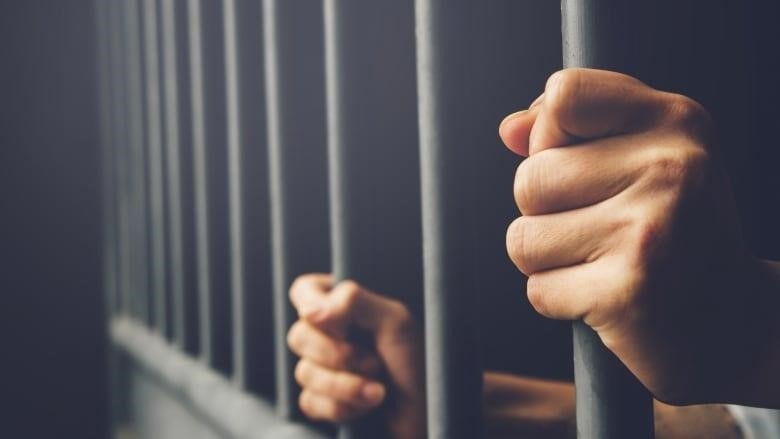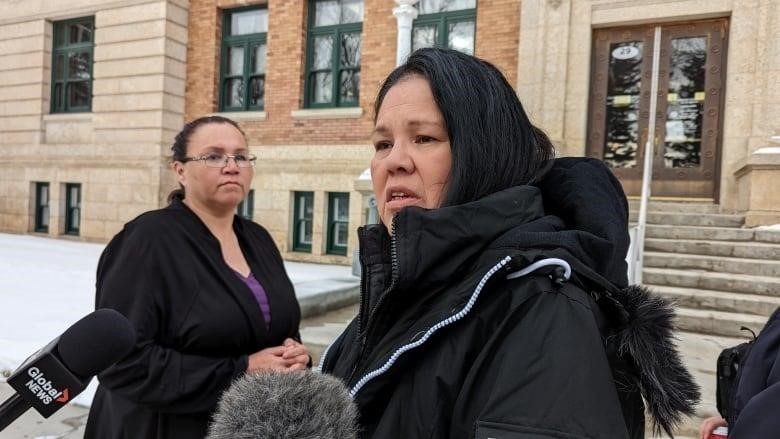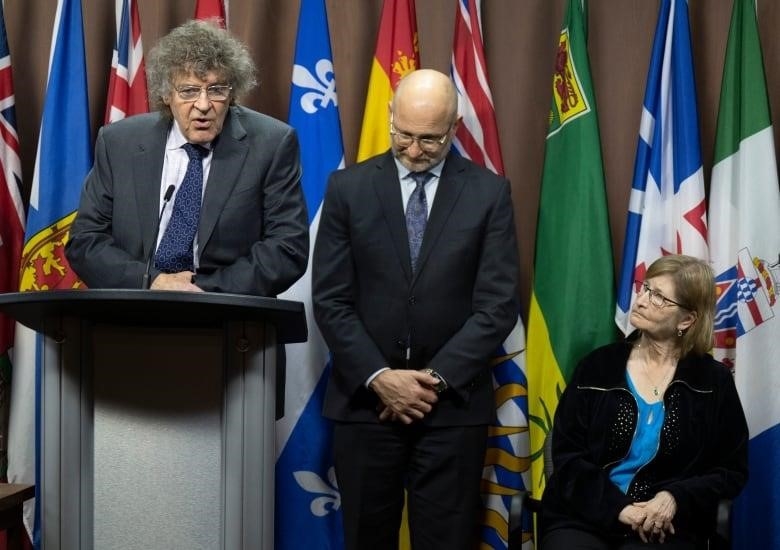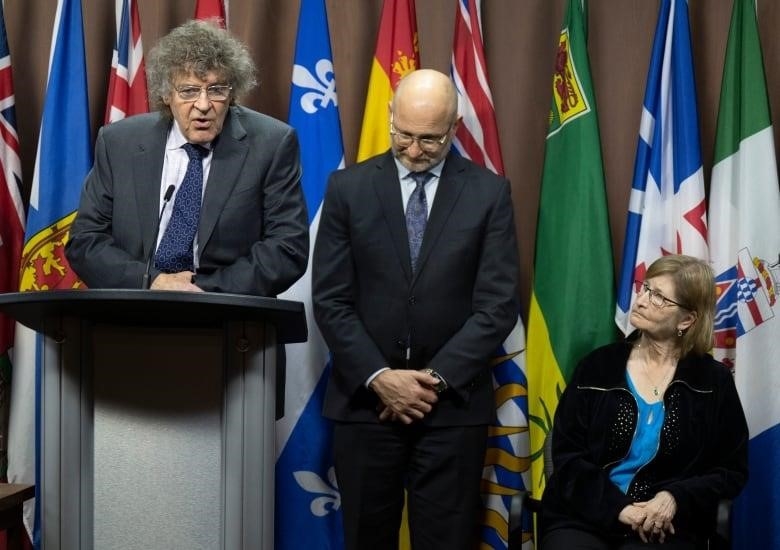
Calls to help people get back into the community and deal with the fact that there are too many people in priso
Justice experts say that proposed federal legislation that would create a new way to review possible wrongful convictions could help groups of people who are overrepresented in the Canadian justice system—if it’s done right.
Federal Justice Minister David Lametti said Thursday that he will introduce a bill to set up a commission to look into cases where justice was not done right.
This would replace the current system, in which the minister has the final say on how to handle possible wrongful convictions caused by federal laws and rules, and hopefully lead to faster results. The commission would also not be part of the Ministry of Justice.
Nicole Porter, who works as a criminal consultant for N.A. Porter and Associates and is an advocate for social justice, hopes that the new system will help people who were wrongfully convicted get back into society.
“Some of these people have spent their whole lives in institutions, and all they’ve ever known is prison,” Porter said, referring to two Saulteaux sisters who have been in the prison system for almost 30 years but say they are innocent.
Porter did a free, independent forensic analysis of the 1994 murder convictions of Odelia Quewezance, 51, and Nerissa Quewezance, 48, from Keeseekoose First Nation, which is about 230 kilometers northeast of Regina.
In 1993, the two were arrested for killing a 70-year-old farmer near Kamsack, Saskatchewan, named Anthony Joseph Dolff. They were found guilty of second-degree murder, along with another person who was a teenager at the time and admitted to the killing.

Their lawyers are trying to get them released on conditions while the federal Justice Ministry looks into whether they were wrongfully convicted. This process can take years.
“The way our world works now is very different from how it worked 30 years ago, so giving people the help they need is really important,” Porter said.
Option to transfe
Geneviève Groulx, a spokesperson for the federal Ministry of Justice, said in an email that once the new commission is set up, “existing applicants would be given the chance to agree to the transfer of their application to the new commission.”
Groulx wrote that if they didn’t want to move and their application had already passed the evaluation stage, the old process would continue and the minister would make a decision.
Porter said that how the sisters decide could depend on how long it takes for the commission to start working.
“If they’ve been working on the review for a few years, it might be in their best interest to stick it out until this happens.”
Listen to Federal Justice Minister David Lametti and an expert on wrongful convictions, who both want to be on the proposed review commission:
As it is now, the Miscarriage of Justice Review Commission Act will give five to nine commissioners the same power as the minister to order a new trial, an appeal, or the dismissal of an application. They will look into criminal cases to see if they were wrongfully convicted.
Correcting overrepresentatio
Lametti told CBC’s Matt Galloway,The CurrentHe said that he hoped the commission would start working as soon as possible, but that it had to go through the House of Commons and the Senate first, which could mean that the law had to be changed.
A Thursday government news releaseSaid the commission would make it easier for groups like Indigenous people and Black people, who are overrepresented in the prison system, to take part in the process.
Lametti said, “We want to make sure that people from groups that are overrepresented in the criminal justice system see this as a trustworthy place where they can come forward.”

Porter said that she had turned in a report that showed a lack of community support, including health care, housing, and jobs, for people leaving prison after being wrongfully convicted or while waiting for a review decision.
Porter said that some of these suggestions seem to be in the bill, but she hopes that more will be in the end product.
The law is also called David and Joyce Milgaard’s law. It is named after David Milgaard, who was born in Winnipeg and became a lawyer.Gail Miller, a nurse in Saskatoon, was raped and killed, but the man who did it was jailed for 23 years without cause.— and his mother Joyce, whom Milgaard said was mostly responsible for getting him out of jail.
Watch: Minister of Justice Lametti announces new laws to start a review commission:
Milgaard continued to fight for people he thought had been wrongfully convicted after he got out of jail.Including the sisters Quewezance.
According to court documents, both Quewezance sisters hurt Dolff and were there when he was repeatedly stabbed, which doctors said was probably what killed him. However, they say they have nothing to do with his death and are not to blame.
In January, the defense said that their confessions were forced and shouldn’t be trusted. The Crown didn’t want them to go free. They said there wasn’t enough proof that the sisters weren’t responsible for Dolf’s death, and they pointed to the fact that they had broken parole several times while they were in jail.
“Whether they are out on bail pending an appeal or have already been found to have been wrongfully convicted, there isn’t anything in place to help them when they return to the community,” Porter said.
Porter thinks that because it could take a long time for the law to take effect, it might be best for the sisters to stay on their current path. However, focusing on how to stop Indigenous people from being overrepresented in the justice system could help their review.
Listen to James Lockyer, one of the founders of Innocence Canada, talk about the Quewezance sisters’ case and the new law:
James Lockyer, a lawyer for the Quewezance sisters and co-founder of the group Innocence Canada, said:The Afternoon Edition that Since the group’s start in 1993, he and others in the group have been pushing for the review commission.
He said that the law could be better in some ways, but that “all in all,” it was a great law.
Lockyer said that while the minister’s office has been looking at evidence that has been given to them, the commission will be looking into things on its own.
“The minister has a huge number of responsibilities, and giving him the job of looking at each individual case will always take a long time.”

From being overpoliced to being oversold
In 2019, Justice Minister Lametti asked Justice Harry LaForme, a retired Indigenous judge from the Ontario Court of Appeal, and former Quebec Court Justice Juanita Westmoreland-Traoré to work together on a report about an independent way to look into possible wrongful convictions.
In an interview with CBC, LaForme said that the law isn’t set up to deal with the problems of overrepresented groups in prisons, such as Indigenous people who are locked up, but he wants it to get to that point and be able to look at this systemic problem.
“The truth is that Indigenous and Black people don’t commit a disproportionate number of crimes because they are Indigenous or Black.” “Instead, they are overrepresented in the criminal justice system because they are overpoliced,” he said.
“Unfortunately, racism is built into the way our justice system works as a whole.”
The office of the correctional investigator says that as of December 25, 2022, 85% of all Indigenous women in federal prison in Saskatchewan were from Saskatchewan.
LaForme said that he wants it to be a requirement that at least one commissioner be black and another be indigenous.
LaForme said, “But there’s no guarantee that will happen, and I think there should be.”
“Reflect Canada’s diversity, including Indigenous and black members,” the proposed process said.
